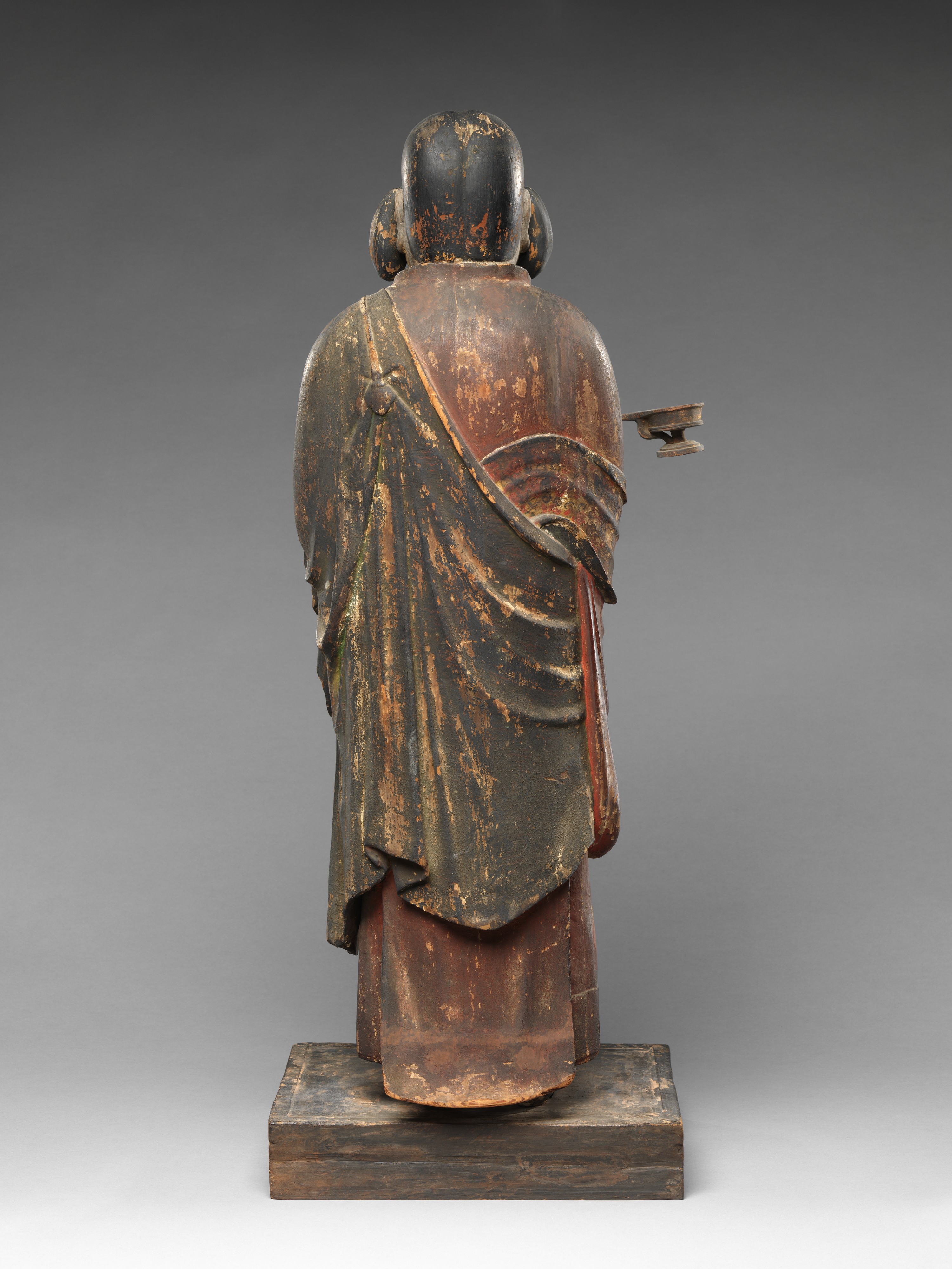Prince Shōtoku at Age Sixteen
Not on view
Prince Shōtoku (574–622), nephew of Empress Suiko (554–628), served as her regent and adviser on matters of civil administration. Reputed to be a great Buddhist scholar and influential statesman, he sent an official diplomatic delegation to China and, in 592, compiled the Seventeen Article Constitution, Japan’s earliest code of conduct for the ruling class.
Sources indicate that the imperial family initiated the veneration of Shōtoku. At first deified as a Shinto kami, by the medieval period the prince came to be seen as a manifestation of a Buddhist deity. Here, he is portrayed as a paragon of filial piety, holding a handled censer and praying for the recovery of his father, Emperor Yōmei, from illness. Statues and paintings of the prince were produced in great numbers from the twelfth to the fourteenth century, when Shōtoku worship was at its peak.
This image cannot be enlarged, viewed at full screen, or downloaded.
This artwork is meant to be viewed from right to left. Scroll left to view more.



